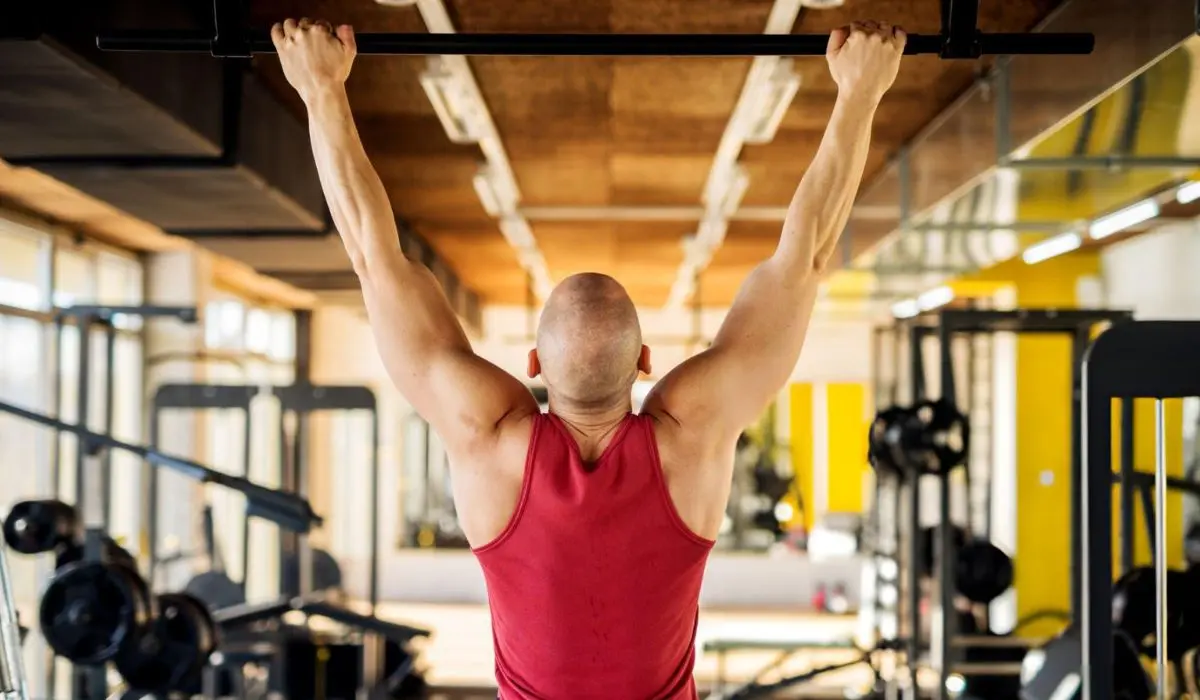Dead hang as its name suggests is a hanging exercise. You can do it at the gym or in the comforts of your home by building a setup. Dead hang exercise is probably the quickest and most efficient way to help you get through your pull-ups. Especially for beginners who are trying to get to their first pull-ups, are often instructed to do dead hangs. This exercise is as simple as it sounds, you just have to hang yourself onto a steady bar.
There are many variations to increase or decrease the difficulty of this exercise. This article will go through some details of this dead hang exercise. We will see how to do this exercise, how dead hang muscles work, and the advantages of performing this exercise.
How Do You Perform Dead Hang?
First and foremost make sure that you have a sturdy support to hang onto. If you are trying to do this from your home remember that the bar has to be strong enough to handle your entire body weight.
So be careful that you are fixing the bar properly. If you want you can place a mat or pillow or something of that sort on the ground, if at all you fall this will break the fall. If you are performing at the gym then no problem. Once your setup is all good then you can get into actual exercise.
- Go for a solid grip with your palms facing away from you keeping your hands shoulder-width apart.
- Avoid jumping onto the bar as the swinging motion of your body can be quite hard to control. Instead, just use a small support like a stepping stool or chair and hang onto the rod.
- Keep your upper body relaxed and ensure that you are maintaining your arms straight without bending your elbows.
- If your rod is at the length that your feet can easily touch the ground then keep your legs folded at the knees and bring your feet to the behind.
- Hold for 10 to 20 seconds at the start. Slowly work your way upward by increasing your time up to 90 seconds. Always keep in mind that gradual and consistent progress ultimately pays off. Do not go overboard with the timing.

Dead Hang Muscles Worked
- Forearms
- Hands and wrists flexors
- Trapezius
- Latissimus dorsi
- Anterior deltoids
- Posterior deltoids
- Abdominal muscles
The dead hang muscles worked are primarily in the upper body. Regularly performing it and slowly progressing the time of hanging might give you visible changes when it comes to your strength, posture, and pain. Now let us get into the benefits.
Benefits Of Dead Hangs
✒ Improves upper body strength
You have seen earlier the muscles engaged while performing this exercise. Your shoulders, upper back, forearms, abs and obliques, and back are worked. So engaging them more means you will see a significant boost in your upper body strength.
It is also a good exercise to get that proper stretch as well. If you feel like your shoulders and upper body are a bit tight and tense, maybe after sitting for longer hours then dead hangs might be a great option to stretch your upper body.
✒ Improve grip strength
Even though dead hangs focus on the entire upper body it has a greater toll on improving your grip strength. Grip strength is essential for everyday life. Some studies have also associated grip strength with mobility. It was revealed that weaker grip strength is linked with decreased mobility.
✒ Decompress your spine
Most of us follow a very sedentary lifestyle with 9 to 5 desk jobs. This can take a toll on your spine. Heavy structural exercises can also contribute to a compressed spine. When you are hanging freely off a bar your spines will naturally decompress opening them up and increasing the space between your vertebrae facilitating the flow of oxygen and nutrient-rich fluid to rehydrate your discs.
✒ Relieves shoulder pain
Some experts suggest doing dead hangs if you have rotator cuff injuries as it is said to soothe the pain. Doing dead hangs regularly may help with eliminating shoulder pain. However, people who have hypermobile shoulders might have to refrain from doing this exercise or speak to their medical advisor or fitness coach before performing.
Dead Hang Variations
✒ Dead hang using overhead rings
Maintaining your balance might be a bit challenging with this variation as overhead rings are not as stable as bars. Grab onto the rings using some support. Grip one ring with each hand and hang onto it for a few seconds. Slowly increase the time as you see progress.
✒ One-handed and hang
Now this requires immense strength as you will have to balance your weight by hanging onto a bar with your one hand
✒ Neutral grip dead hang
This one is very similar to a normal dead hang but you just have to face your palm towards your body throughout the hang.
Final Thoughts
Dead hangs are a really good exercise for engaging your upper body and strengthening them. It is also an excellent way to work your way up towards your first pull-up. There are many benefits to practicing deadlift which we saw earlier.
We also saw many details like dead hang muscles worked, pros of dead hang exercise, variations, etc. Make sure that you are slowly increasing the time of hanging and not doing it too soon.







